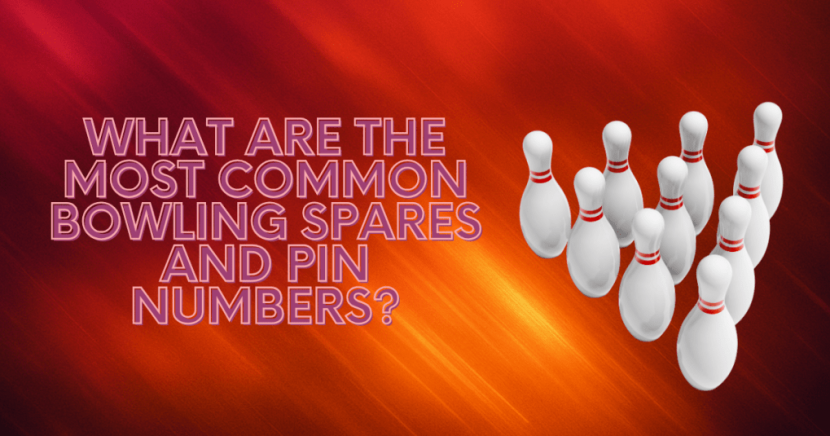What Are the Most Frequent Bowling Spares and Pin Numbers?

Bowling could look easy at first look—roll the ball, knock down the pins, repeat—however each bowler shortly learns that spares are the place video games are received or misplaced. Strikes are thrilling, however constant spare taking pictures is the important thing to increased scores.
On this weblog, we’ll break down the commonest bowling spares you’ll face, clarify the pin numbers in normal bowling, and share recommendations on the best way to convert these difficult leaves.
Understanding Bowling Pin Numbers
Earlier than diving into spares, let’s evaluation the bowling pin setup. A normal bowling lane has 10 pins organized in a triangle:
7 8 9 10
4 5 6
2 3
1
-
Pin 1 is the top pin (the entrance pin).
-
Pins 2 and three are immediately behind it, forming the second row.
-
Pins 4, 5, and 6 make up the third row.
-
Pins 7, 8, 9, and 10 are the again row.
When somebody talks a couple of “2-4-5 spare” or a “7-10 cut up,” they’re referencing these numbers.
The Most Frequent Bowling Spares
1. The Single Pin Spare
Essentially the most frequent spare you’ll shoot is a single pin—typically the ten pin (for right-handers) or the 7 pin (for left-handers).
-
Why it occurs: A barely off-angle shot leaves one nook pin.
-
How you can choose it up: Use a plastic spare ball, throw straight, and intention throughout the lane.
2. The two-4-5 Spare
A quite common go away for right-handed bowlers.
-
Why it occurs: The ball deflects after hitting the top pin mild, leaving pins on the left aspect.
-
Tip: Regulate your line barely proper to catch all three pins clear.
3. The Bucket (2-4-5-8)
Nicknamed “the bucket,” this go away could be irritating.
-
Why it occurs: A light-weight pocket hit that doesn’t drive by way of the pins.
-
How you can choose it up: Hit the 2 pin sq.—too skinny and also you’ll chop the two, too thick and also you’ll miss the 8.
4. The three-6-10 (Proper Facet Spare)
This cluster exhibits up typically for right-handers.
5. The two-8 or 3-9 Mixture
These are referred to as “sleeper spares” as a result of one pin hides behind one other.
6. The Washout (1-2-4-10 or 1-3-6-7)
A cut up with the top pin nonetheless standing.
7. The Notorious 7-10 Break up
Additionally referred to as the “aim posts” or “bedposts,” this is likely one of the hardest spares in bowling.
-
Why it occurs: A strong strike ball that hits too mild.
-
Actuality verify: Even execs not often convert this one, nevertheless it’s legendary when it occurs.
Why Studying Spares Issues
-
Consistency wins: Strikes are streaky; spares are controllable.
-
Increased averages: Most bowlers enhance their scores extra by working towards spares than strikes.
-
Confidence: Realizing the best way to deal with widespread leaves eliminates frustration.
Closing Suggestions for Spare Capturing
-
Use a spare ball – A plastic ball goes straighter, lowering hook unpredictability.
-
Stand and goal persistently – Create a system for every widespread spare (e.g., 10 pin: stand far left, goal second arrow).
-
Observe the powerful ones – Buckets, sleepers, and washouts deserve further lane time.
Conclusion
Bowling isn’t nearly strikes—it’s about controlling your spares. From the straightforward single pin to the dreaded 7-10 cut up, each bowler will face these challenges. By understanding bowling pin numbers and working towards the commonest spares, you’ll construct consistency, increase your scores, and benefit from the recreation much more.

No Comments